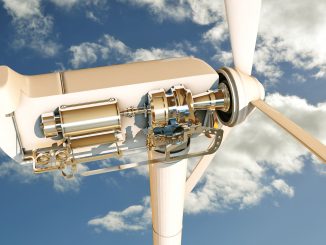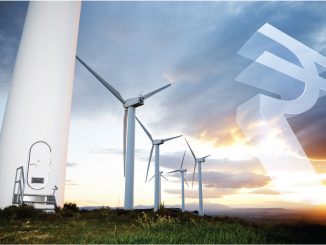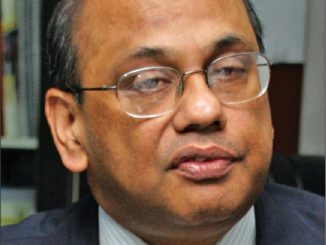 India’s renewable energy sector is growing rapidly, with emerging opportunities in hybrids, energy storage, green hydrogen, electric vehicles (EVs) and other segments. The country’s policy and regulatory regime is also transitioning simultaneously, with adequate adjustments being made to allow new tender designs that can incorporate these segments. The Solar Energy Corporation of India (SECI) is the leading nodal agency, responsible for a sizeable share of the disruptive changes occurring in the space. It is an exciting time for the organisation with significant bidding activity expected in the coming months in the emerging segments. Taking charge as managing director, SECI, in August 2021, Suman Sharma, an Indian Revenue Service officer of the 1990 batch, has a challenging task ahead of her as she navigates the organisation through these new auctions. In an interview with Power Line, the first woman head of SECI discusses the growth potential of renewable energy in India, SECI’s role in this transition and the future outlook…
India’s renewable energy sector is growing rapidly, with emerging opportunities in hybrids, energy storage, green hydrogen, electric vehicles (EVs) and other segments. The country’s policy and regulatory regime is also transitioning simultaneously, with adequate adjustments being made to allow new tender designs that can incorporate these segments. The Solar Energy Corporation of India (SECI) is the leading nodal agency, responsible for a sizeable share of the disruptive changes occurring in the space. It is an exciting time for the organisation with significant bidding activity expected in the coming months in the emerging segments. Taking charge as managing director, SECI, in August 2021, Suman Sharma, an Indian Revenue Service officer of the 1990 batch, has a challenging task ahead of her as she navigates the organisation through these new auctions. In an interview with Power Line, the first woman head of SECI discusses the growth potential of renewable energy in India, SECI’s role in this transition and the future outlook…
What have been the highs and lows in the renewable energy sector over the past year?
In the financial year 2020-21, the pandemic had an adverse impact on the power sector. Power demand during the initial lockdown dropped by 25 per cent. But the effects of the pandemic were short term in nature.
Global climate change has nudged people into action. To limit the global rise in temperature there is an urgent need for decarbonisation of the energy sector. According to reports by the International Renewable Energy Agency, by adopting renewable energy and energy efficieny measures it will be possible to achieve 90 per cent of the required carbon reductions, with two-thirds coming from renewable energy alone. At the recently held Glasgow Climate Change Conference, leaders from across the world have promised to work together to achieve the climate targets.
Renewable energy is expected to play a major role in transforming the Indian energy sector, and the transition is happening much faster than we had anticipated in the backdrop of the recent stress on coal stocks at thermal plants. In August 2021, the total installed renewable energy capacity in India, excluding large hydro, crossed the milestone of 100 GW. Now, India stands at fourth position in the world in terms of installed renewable energy capacity, fifth in solar and fourth in terms of installed wind capacity.
In the financial year 2020-21, India added 7.41 GW of renewable energy capacity. Almost a quarter of the capacity came from SECI-tendered projects. With the introduction of innovative tenders such as wind-solar hybrid, round-the-clock (RTC) and peak power projects, the uptake of renewable power is expected to further accelerate in the next few years.
Is the renewable energy sector moving in the right direction to achieve the set targets? Is the target achievable, especially in light of delays due to the Covid-19 pandemic?
Renewable energy is moving in the right direction in line with India’s commitments on international forums. The pace of initiatives/reforms being undertaken is unprecedented and India has emerged as a major country striving towards world energy transition. The targets are difficult but definitely achievable as the economy has rebounded to its pre-Covid levels.
What are the key drivers, risks and hurdles in the renewable energy sector?
After a lull due to the effects of the pandemic, the Indian economy is back on its growth trend. This would cause the energy demand to go up, especially from bulk consumers. In addition, the grid price parity of renewable power with conventional sources of power has made it an attractive alternative to conventional power sources for discoms.
Through newer technologies in renewable energy like complementarity and energy storage, the challenges of intermittency and grid balancing are being addressed. India is able to attract sizeable global investments in the sector.
The renewable energy growth story is incomplete without bringing all states and discoms on board, and I am happy to say that the discoms are also considering renewable energy favourably and are opening up to the technology and systemic changes required for seamless operations.
Concerns regarding land availability are being addressed through higher efficiency systems, floating solar systems, etc. to conserve land for alternative uses. Even concerns of transmission systems are being addressed through dedicated transmission corridors for renewables, better planning and coordination in the developmental phases and long-term planning.
How does SECI plan to address issues like timely payments, transmission and land availability in its auctions?
SECI ensures timely payments to developers and has a multilayered payment security system, such as letters of credit and a payment security fund to back up timely payments from discoms. These payments are offered additional security by the government through the Reserve Bank of India.
As stated earlier, land availability concerns are being addressed through technological innovations that reduce the dependence on land. The government has a massive programme for the creation of green energy corridors with advanced scheduling/forecasting systems, etc. and a transmission plan of over 66 GW has been drawn.
What are the key focus areas and priorities for SECI? Is SECI planning to focus more on hybrid or RTC tenders than plain solar and wind tenders?
Considering the geographical expanse of the country and differing local factors such as renewable resources availability, a one-size-fits-all approach cannot be applied to India. Hence, single-technology projects as well as multi-technology blended projects would continue to come up under different conditions. However, we are sure that technological innovations and efficiency improvements will continue at an accelerated pace. Today, the country is contemplating energy storage and green hydrogen, among other technologies, in a big way. In addition, commensurate with the potential of EVs, powering this segment through green energy is an emerging priority.
 What are SECI’s plans in the area of green hydrogen?
What are SECI’s plans in the area of green hydrogen?
Green hydrogen is being considered a potential initiative for Aatmanirbhar Bharat, and we are working on priority for its application in the fertiliser and refinery segments. SECI is working closely with other government agencies, PSUs, etc. to launch some large-scale initiatives soon.
We have already brought out a notice inviting tender for setting up a 25 kW pilot project in Leh, and with this unique project at a high-altitude difficult terrain, we will demonstrate the potential for green hydrogen in decentralised applications and remote areas.
In your view, which emerging technologies (energy storage, hybrids, green hydrogen) will assume centre stage in the next 10 years?
India needs a mix of solutions to cater to its diverse demand. All the technologies mentioned have immense potential, and these technologies have separate applications. We have already tried and tested different hybridisation models in our tenders and awareness of these configurations among the investor community, offtakers, etc. is relatively more as compared to other nascent technologies.
On the energy storage front, there are several technologies. Batteries and pumped hydro have a better visibility currently. Green hydrogen is still at a nascent stage and will take some time to catch up on a large scale. Apart from these, there are many more technologies, a related field being EV and the associated charging infrastructure, which holds great promise.



